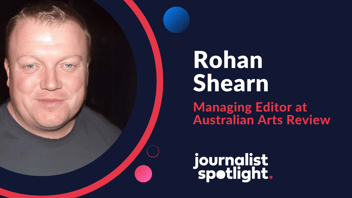The Rise of Substack: What is it and how can it be leveraged?
Substack has emerged as a serious contender in the digital publishing landscape, with a remarkable surge in popularity since its launch in 2017. The platform offers writers a level of autonomy and control over their work, packaged with a user-friendly interface, a subscription-based model, and the potential for revenue generation.
And in 2025, it’s more relevant than ever.
According to Medianet’s 2025 Media Landscape Report, journalists are increasingly turning to alternative platforms like Substack to share their stories. With only 65% of respondents reporting full-time employment, the option to monetise independently published content is looking more enticing than ever.
So, what is Substack?
Substack is best described as the intersection of a traditional blog and a digital newsletter platform. Users can create their own site complete with a custom landing page and title, and a custom domain if they have one available, for the purpose of publishing posts that are sent directly to subscribers' inboxes and archived online.
What makes Substack such an appealing platform to its users is the integration of paid subscriptions and the potential for monetisation. Writers have the choice of making content free and available to anyone who visits their page, or posting their content behind a paywall available only to paid subscribers. These subscriptions start at $5/month, and users can set their price beyond that, with Substack taking a 10% cut of all revenue from both subscriptions and the on-platform tip-jar.
For me, the appeal is that its reach and tone is global, which has a bunch of implications for an Australian woman. I’m able to have a bolder voice and interact and write at a level and with a level of discerning argument and intellectual robustness that is largely dismissed in Australia. We have a fear of “intellectualism”, of questioning the status quo. (Sarah Wilson)
How does Substack set itself apart from competitors like Medium, Blogger and WordPress?
Where other platforms focus on blogging and content management, Substack prioritises the distribution of digital newsletters directly to subscribers, fostering a connection between the writer and their audience.
With the integration of paid subscriptions, Substack is not reliant on advertising or sponsorships for revenue and provides users with the potential for a reliable income stream.
The streamlined interface and focus on user-friendly design make it easy for writers to set up a newsletter right out of the box, without having to worry about the need for any technical expertise or website design know-how. Community management is made easy with options for readers to like, comment and share posts.
Why are journalists flocking to Substack in 2025?
The 2025 Media Landscape Report reveals that nearly 40% of journalists are either actively publishing on or considering using alternative platforms like Substack. Their top motivations include:
- To supplement income (67% felt they were underpaid in 2024)
- To express personal views (Almost 20% reported facing negative repercussions for voicing personal opinions in their work)
- To boost their personal brand
- As a creative outlet or hobby
Substack offers a path to financial independence, creative freedom, and a direct connection with readers—benefits that are increasingly attractive in a time of job insecurity and shifting newsroom dynamics.
How can PR leverage Substacks?
The 2025 MLR reported that 83% of journalists use press releases as the second most common source for stories. With a platform that provides access to highly engaged audiences that care deeply about the topics at hand, Substack blogs allow public relations professionals the opportunity to pitch their content to writers who have built a trusted reputation among their readers.
Substack has created a platform that fosters a strong engagement between writers and their audience. It provides writers with the opportunity to have more freedom and independence to publish their individual views with very little oversight and no editorialisation from the platform itself.
This can be both an asset and a liability.
So, if you want to get in front of a Substack publication's audience, consider the following:
- Stories pitched to these writers need to consider the individual perspective and niche subjects relevant to their publications. This is true of any pitch but is especially crucial when reaching out to a Substack writer. Personalising your pitch is key to making an impact.
- Understand why that writer chooses to publish on Substack instead of traditional media. Align your story with their motivations and audience interests to increase the likelihood of coverage.
- Pitch stories that encourage direct engagement between the writer and their audience. High-engagement content is more valuable to Substack journalists, as interaction helps them grow their readership.
- Be ready to engage with the writer and answer questions. Substack journalists prioritise credibility, meaning they will critically assess your story to ensure it aligns with their values and audience expectations.
- Also, be prepared to accept the writer’s editorial independence—they may present your story from a different perspective that doesn’t fully align with your objectives. However, this authenticity is what makes Substack a powerful platform.
In return, you will be rewarded with:
- Exposure to a targeted, highly engaged audience. Coverage on a Substack publication can have a high impact because the writer and audience care deeply about the topic.
- Your story will go straight into the inboxes of subscribers and be included in the Substack archive.
- Your story being covered by someone that the audience deeply respects and values, and can influence their opinions on a topic.
I have used press releases and PR driven stories many times, especially for interviews - really I see my Substack as being a micro publication. Substack almost has in-built earned media as its function, with its recommendation tools - but yes, it will become more common. (Patrick Lenton)
Some recommended Substacks from the Research team:
-
This Is Precious by Sarah Wilson - for lifestyle and culture
https://sarahwilson.substack.com/ -
Unmade by Tim Burrowes - for media and marketing professionals
https://www.unmade.media/ -
nonsensense newsletter by Patrick Lenton & Bec Shaw - for commentary on popular culture, media and current affairs
https://heterosexualnonsense.substack.com/ -
Latika Takes by Latika Bourke - for Australian & British politics and geopolitics
https://www.latikambourke.com/ -
The Future of Everything by Tim Dunlop - for political and cultural commentary
https://tdunlop.substack.com/ -
What the Health?! by Emily Casey - for health, innovation and tech
https://www.whatthehealth.io/ -
News & Reviews by Bri Lee - for literature and publishing
https://newsandreviews.substack.com/ -
Shit you should care about by Lucy Blakiston - for internet culture, popular media and news
https://shityoushouldcareabout.substack.com/
Substacks on Medianet
Find over 30 Substacks from the Australia and New Zealand region in the Medianet Database covering topics such as current affairs, pop culture, lifestyle, business, economics and personal writings. Explore our plans here.
This article was originally published in 2024 and has been updated for 2025.
Special thanks to:
Sarah Wilson for her comments. Sarah Wilson, an early adopter of the Substack platform, has one of the largest in Australia with 53,000 subscribers, 1700 of which pay for premium articles.
Patrick Lenton for his comments.





